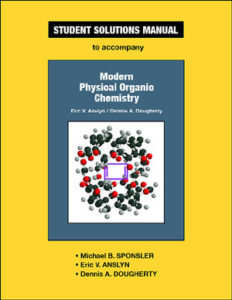

PART III: Electronic Structure: Theory and Applications
.jpg)
From our perspective, a protein, electrically conductive polymer, or organometallic complex should be as relevant to a course in physical organic chemistry as are small rings, annulenes, or non-classical ions. Further, we have incorporated chapters focused upon several of the modern disciplines that benefit from a physical organic approach. Therefore, while treating the fundamentals, we have wherever possible chosen examples and highlights from modern research areas. However, students should also have an appreciation of the current issues and challenges in the field, so that when they inspect the modern literature they will have the necessary background to read and understand current research efforts. A student must know the fundamentals, such as the essence of structure and bonding in organic molecules, the nature of the basic reactive intermediates, and organic reaction mechanisms. We seek to rectify that situation with this text. For some time it has been true that if a student opens a physical organic chemistry textbook to a random page, the odds are good that he or she will see very interesting chemistry, but chemistry that does not represent an area of significant current research activity. This book is meant to capture the state of the art of physical organic chemistry in the early twenty-first century, and, within the best of our ability, to present material that will remain relevant as the field evolves in the future. Dougherty (California Institute of Technology) and published by University Science Books in 2006. Anslyn (University of Texas, Austin) and Dennis A.
SOLUTION TO ANSLYN AND DOUGHERTY'S MODERN PHYSICAL ORGANIC CHEMISTRY FREE DOWNLOAD
Free Download Modern Physical Organic Chemistry written by Eric V.


 0 kommentar(er)
0 kommentar(er)
